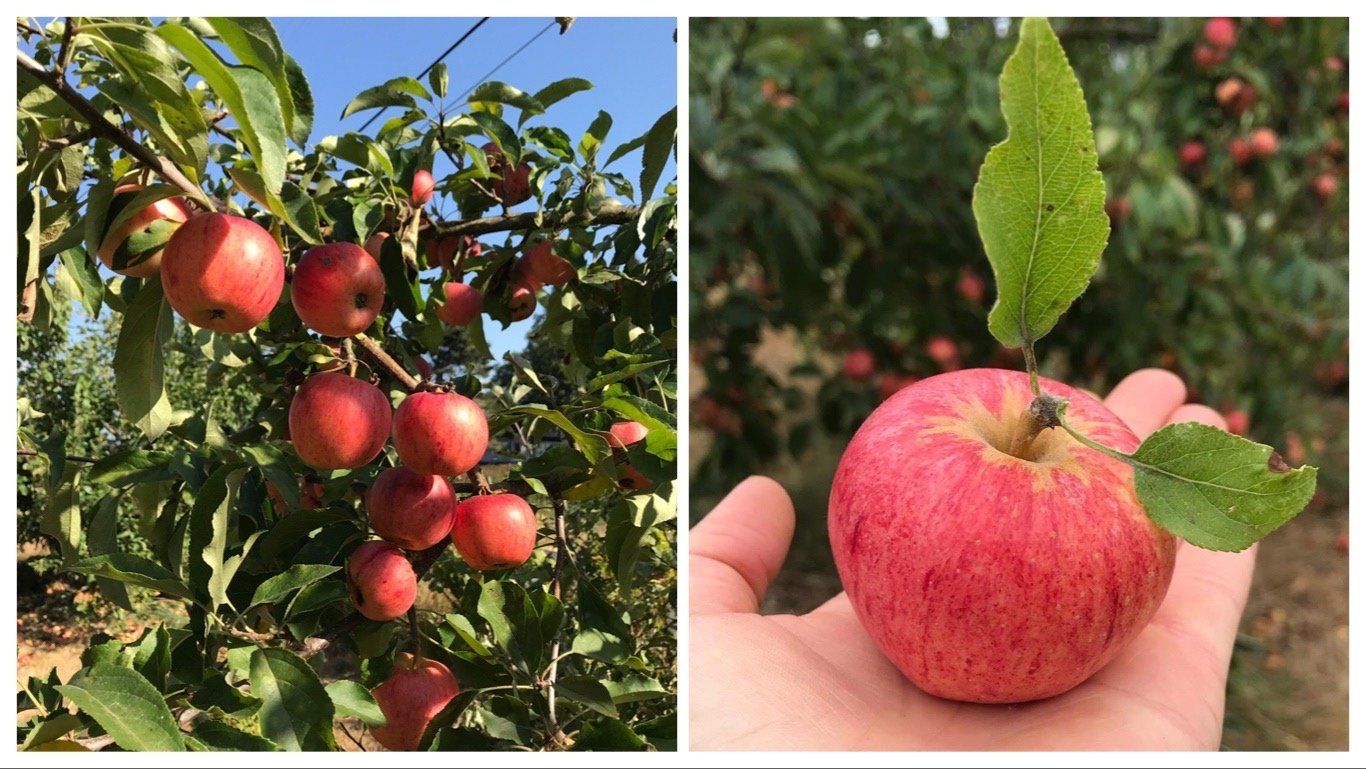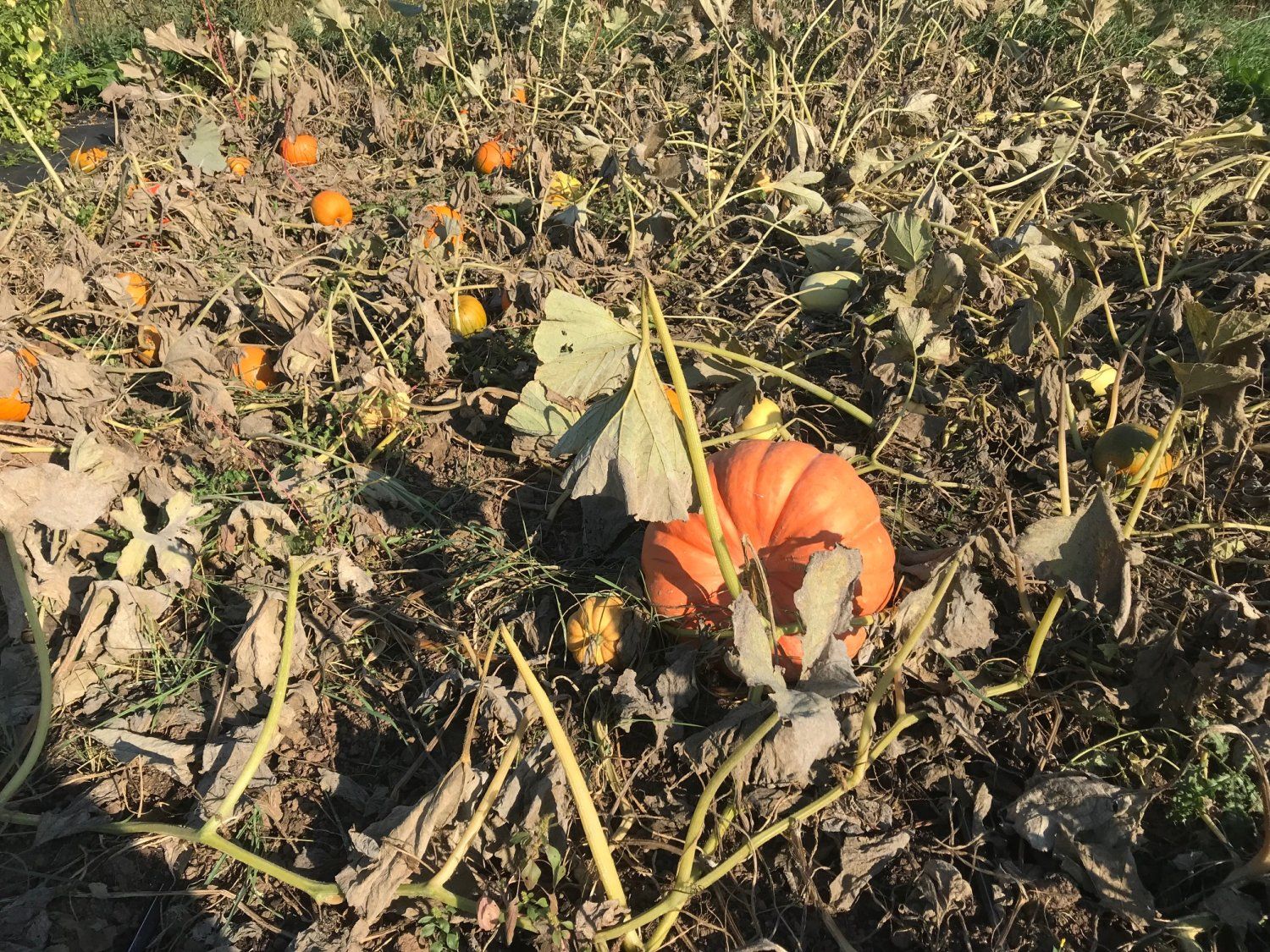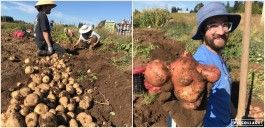Welcome to week 19 of the 2022 Flat Tack Farm CSA program!
What's Happening?!
We've been digging lots of potatoes! So far, we've hosted 3 different potato dig volunteer days and have ONE MORE happening this Friday from 2-5 pm. We could use a hand digging out the last few rows of "gold". Please let us know if you'd like to come out and get dirty with us :)
We grow quite a few different varieties and they all have their own unique qualities. Here is a list of what we're growing:
Harvest Moon (Creamy and nutty flavor, Purple skin with yellow flesh)
Masquerade (Creamy and buttery, Purple and White skin with yellow flesh)
Nicola (Sweet and creamy, yellow flesh/skin)
Desiree (Versatile and good flavor Red skin, yellow flesh)
Red Chieftan (smooth and creamy, Red skin with white flesh)
Elba (Round and slightly waxy, Light Tan with white flesh) ***This week's featured potato
Ama Rosa (Fingerling red skin, pink flesh)
Magic Molly (Fingerling purple skin and flesh)
La Ratte/Austrian Crescent (Fingerling yellow skin & flesh)
Red Thumb (Fingerling red skin, yellow flesh)
Makah Ozette (Preserved by the Makah Tribe on the Olympic Peninsula, a knobby fingerling with yellow skin and flesh)
Every week we change up which potato is available to give everyone a chance to try a new variety.
A quick history of the potato:
The potato originated in South America near modern day Peru/Bolivia in the Andes mountains. Archaeologists have found scraps of wild potato dating all the way back to 13,000 BC. Potatoes are part of the solanum family and have evolved from their poisonous ancestor the deadly nightshade. Other crops in the same family include tomatoes, peppers, tomatillos, eggplant, and tobacco. Around 8,000 BC the native South Americans began to selectively cultivate the potato. They had a process of "freeze-drying" the potatoes to make them edible. They would hike them to the top of the Andes in the winter and process them. This process would freeze them at night and dry them in the intense daylight. This helped to break down the solanine toxin in the potato. They called the product chuño (a Quechua word meaning frozen potato). After millenia of selecting and breeding out the high toxins and bitterness, we no longer have to freeze dry potatoes in order to eat them! The Spanish picked up these tasty and hardy storage crops and took them to Europe around 1530's. It took a while for the potato to be accepted into the mainstream due to their toxic predecssor and the fact that they grew in the ground. They used to be thought of as poisonous, blamed for many diseases and thought to poison the soil. (I think bad sanitation is more likely the culprit). Not until the 1800's were they a commonly eaten European crop. After that the popularity spread across the world. They are now the 4th most popular crop grown in the world!
Also new this week is turnips! To bring in the autumn we've got some big and beautiful Purple Top Turnips ready to harvest. Turnips are low in carbs and full of vitamins and make an excellent alternative to potatoes. Try them roasted with garlic or mashed with herbs. And don't forget to use the greens! They are great sauteed with other greens like kale or collards.
We hope you enjoy this week's abundance!
Your farmers,
Kelly, Patrick & Spencer




